It’s that time of year again when the clocks spring forward. So, we’ve rummaged through our collections to present 10 fascinating and beautiful clocks for your viewing pleasure.
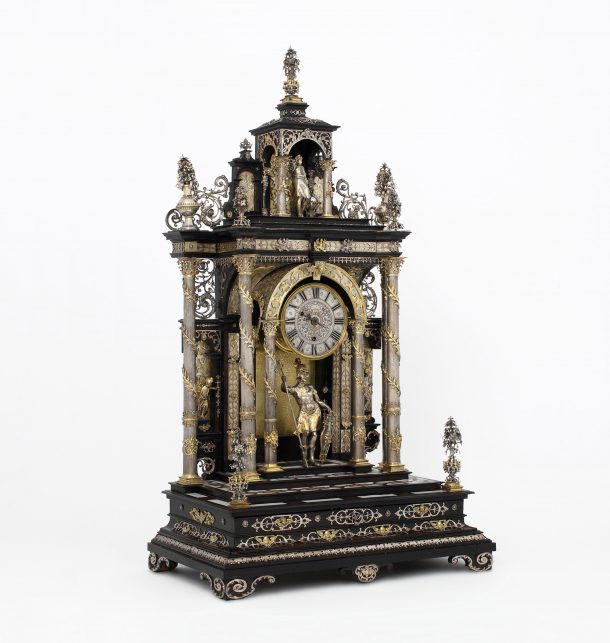
1. Our Concealed Histories display highlights how the Nazis stripped Jewish art collectors of their possessions. This clock was part of Nathan Ruben Fränkel’s encyclopaedic collection of timepieces, which he left to his family who were later persecuted by the Nazis. It resurfaced over 30 years later with no information about its provenance.
Read more about the display and visit when the museum reopens.
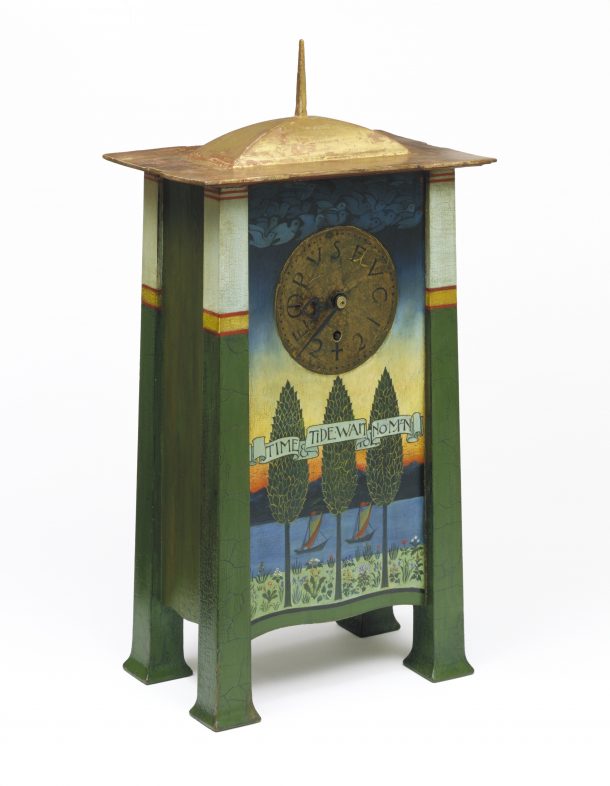
2. Charles Voysey, famous as an architect and as a designer of wallpaper and textiles, also turned his talents to this unusual clock. Its childlike, flat patterns are reminiscent of his signature design style. Meet Voysey and his Arts and Crafts contemporaries in this article.
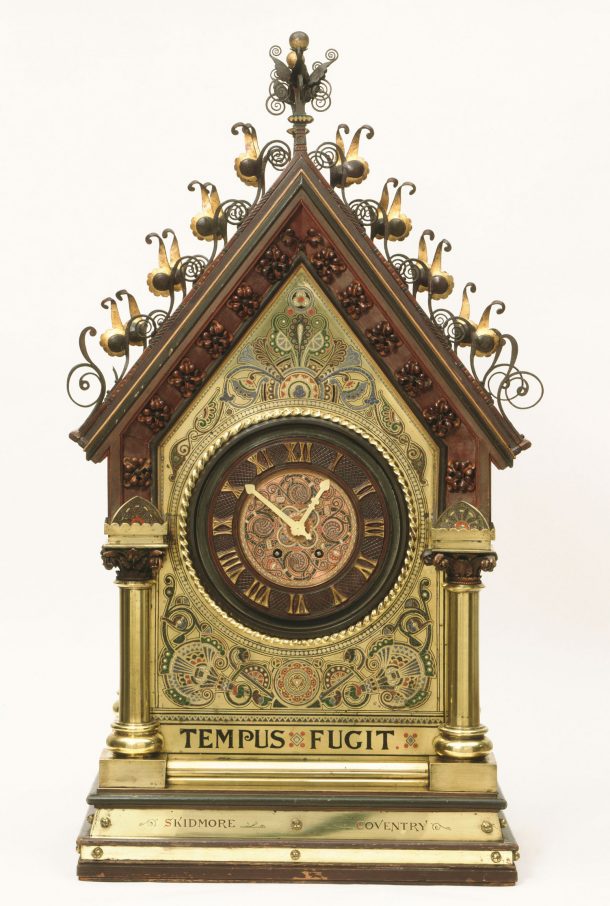
3. This monumental clock is currently awaiting treatment in our conservation studios, ready for display in our Alice: Curiouser and Curiouser exhibition when the museum reopens. As visitors to the exhibition will discover, at over a metre tall, this clock is a lot larger than it looks in the picture!
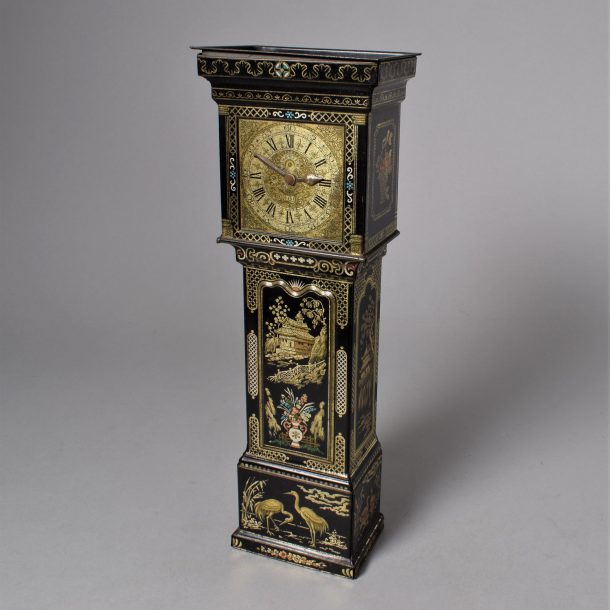
4. Spoiler alert – this is actually a biscuit tin shaped like a clock. In the mid 19th century, decorative tinware was all the rage, brought on by the invention of printing directly on to tinplate. The advent of the Second World War stopped all production of exotic tinware however, and the trend never really revived.
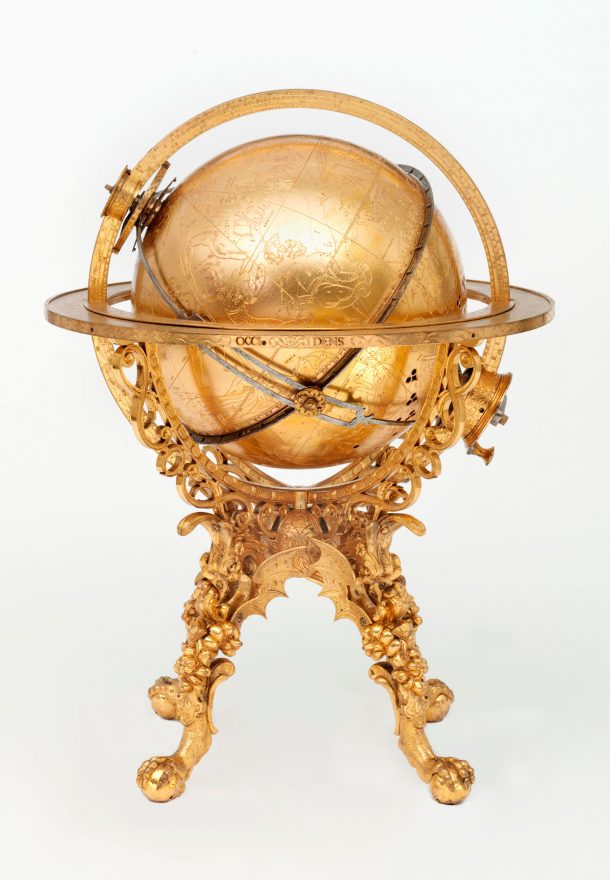
5. Our oldest featured clock, this was bought in 1584 by Emperor Rudolph II of Hungary. Clearly it wasn’t your average functional household item. At the time it was fashionable to own scientific instruments that celebrated humankind’s ability to control nature. With its mechanical globe, this clock could tell the time by the position of the stars – apparently.
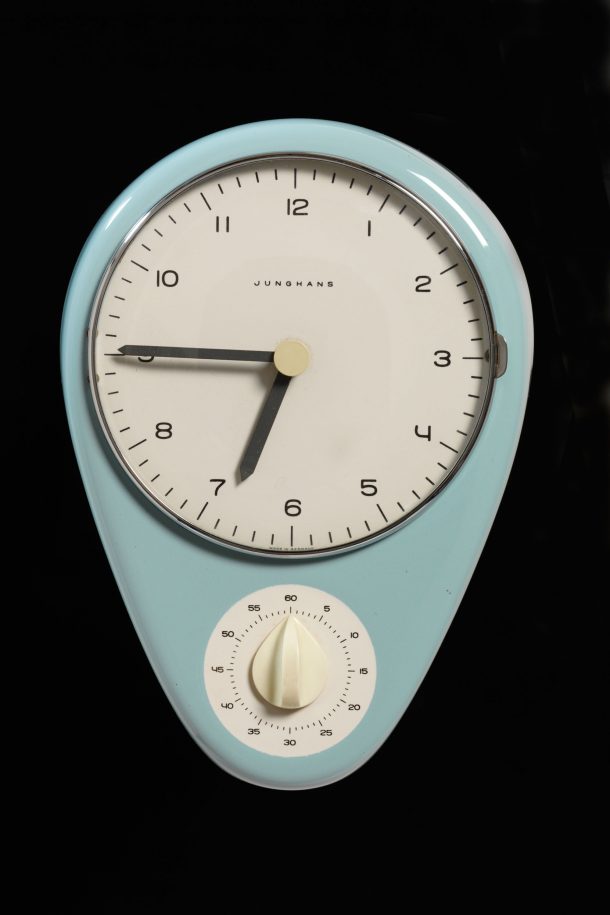
6. This humble clock is a notable example of post-war industrial design. Its designer, Max Bill, was Director of the renowned Ulm School of Design, which was founded in Germany after the Second World War with the intention to rebuild the country and promote “moral purpose through design”.
Find out more about post-war design in our collection.
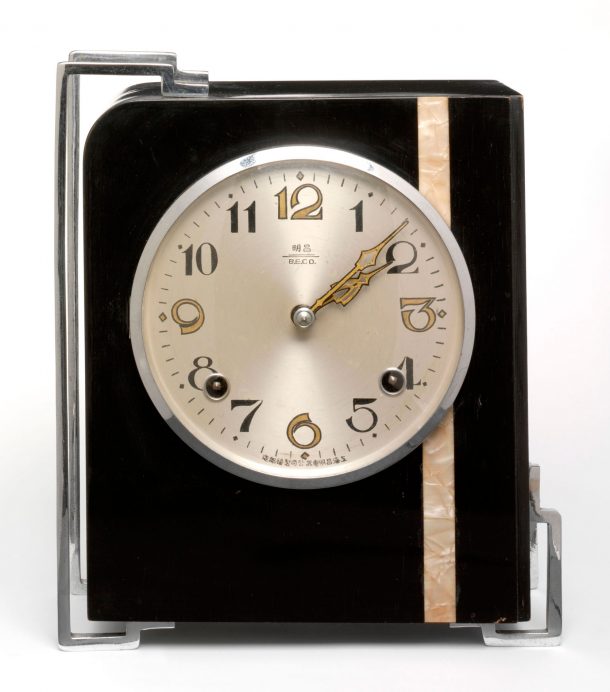
7. In the 1920s and 30s, the Art Deco style took the world by storm. This sleek clock was made in Shanghai in the 1930s, at the time it was the most fashionable city in China. The market for this clock would have been either a Chinese person eager to adopt a western lifestyle, or a Westerner living in China.
Find our more about Art Deco’s global influence.
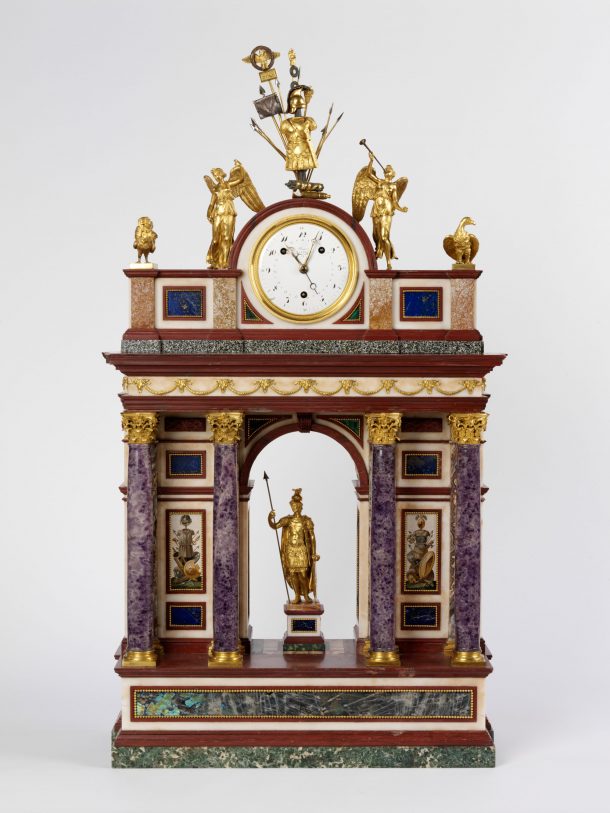
8. The designer of this clock, Giacomo Raffaelli, also invented the astonishingly painstaking micromosaic technique that decorates its surfaces. The process involves applying millimeter-thin canes of glass. See how it’s done in this video.
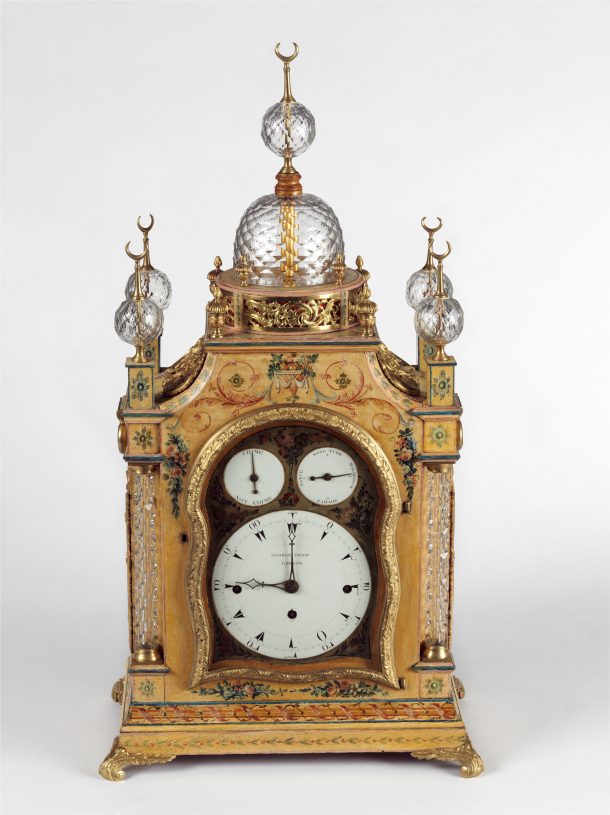
9. This elaborate 18th century clock was made in London specifically for the Turkish market. The maker incorporated design elements that appealed to Turkish buyers, such as the glass dome and crescent-moon finials.
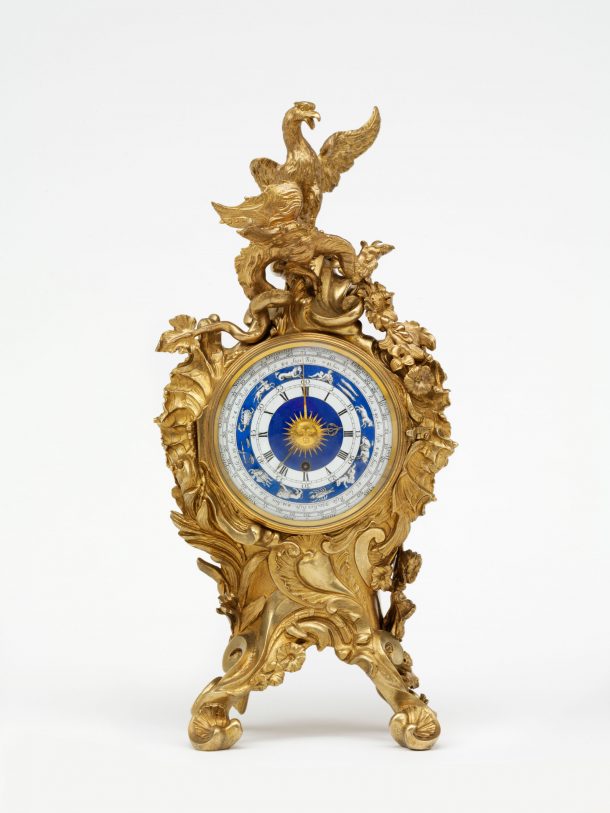
10. There’s a lot going on here – an eagle, shells, batwings, flowers and a draco (dragon with the tail of a snake). It’s an excessively flamboyant clock, which is typical of the French Rococo design style (1720s – 1770s). We just had to include it in our top 10.
Don’t forget to put your clocks forward an hour on Sunday 29 March!


